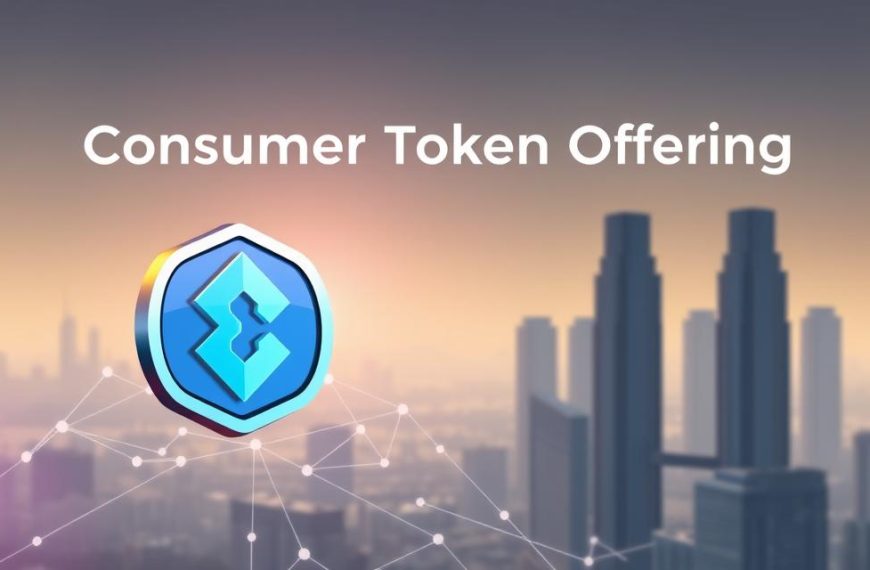Embarking on the journey of establishing an online business can be a transformative experience, offering numerous benefits, including low startup costs and flexibility in working hours.
With the e-commerce landscape continually evolving, now is an excellent time to launch your venture. This comprehensive guide will walk you through the essential steps needed to turn your business idea into a successful online venture.
From finding profitable ideas to launching and scaling your business, we’ll cover the practical strategies for market research, website creation, and effective marketing techniques to reach your target customers.
Understanding the Online Business Landscape
The online business landscape is rapidly evolving, driven by technological advancements and changing consumer behaviors. As a result, entrepreneurs must stay informed about the current trends and projections in e-commerce to position their businesses effectively.
The Growth of E-commerce
The e-commerce sector has experienced unprecedented growth in recent years, with online sales continuing to claim an increasing share of total retail spending. Current projections indicate that e-commerce will represent over 20% of all retail sales by 2027, demonstrating the significant shift in consumer behaviour towards online shopping. For more information on starting an online business, you can visit Investopedia’s guide.
| Year | E-commerce Sales Percentage |
|---|---|
| 2022 | Less than 15% |
| 2027 | Over 20% |
Benefits of Starting an Online Business
Starting an online business offers numerous benefits, including significantly lower overhead costs compared to traditional brick-and-mortar establishments. Online businesses also offer remarkable flexibility, allowing entrepreneurs to work from anywhere with an internet connection and set their own schedules. The global reach of an online business means you’re not limited to local customers, enabling you to tap into international markets and niche audiences.
- Lower overhead costs due to the absence of physical retail space
- Flexibility to work from anywhere and set your own schedule
- Global reach, enabling access to international markets and niche audiences
- Operational 24/7, allowing customers to browse and purchase at any time
- Scalability, enabling growth without proportional increases in costs or infrastructure
Understanding these benefits and the evolving online business landscape is crucial for new entrepreneurs. By leveraging the advantages of online businesses, entrepreneurs can position themselves for success in the digital marketplace.
Finding Your Profitable Online Business Idea
The key to a thriving online business lies in identifying a profitable idea that resonates with your passions. A good online business idea is one that you’re passionate about, but also meets a real need in the market.
Exploring Popular Online Business Models
Popular online business models include e-commerce stores, dropshipping, digital products, subscription services, online courses, freelance services, and affiliate marketing. E-commerce allows you to sell physical products through your own website, while dropshipping eliminates inventory management by having suppliers ship directly to customers.
Digital products like e-books, courses, software, or templates offer excellent profit margins as they can be created once and sold repeatedly without additional production costs.
Evaluating Your Skills and Passions
When evaluating potential business ideas, consider your existing skills, knowledge, and passions that could be monetised in the digital marketplace. The most successful online businesses often emerge from the intersection of the founder’s expertise, market demand, and profit potential.
Niche selection is crucial—focusing on a specific segment of the market allows you to target your marketing efforts more effectively and establish yourself as an authority. Consider problems you’ve personally experienced that need solutions, as these can often lead to business ideas with built-in demand.
To find a profitable online business idea, it’s essential to balance your personal interests with market demand. Research trending products and services to identify opportunities where consumer interest is growing but competition isn’t yet saturated. By doing so, you can create a sustainable venture that you’ll enjoy running.
Creating a Solid Business Plan
Developing a robust business plan is crucial for the success of your online venture. Even if you don’t plan on obtaining funding for your business, having a plan is valuable because it lets you spot any potential bumps down the road and plan for future growth and profitability.
Essential Components of an Online Business Plan
A well-crafted business plan serves as a roadmap for your online venture, helping you clarify your vision, identify potential challenges, and establish a path to profitability. The key components include:
- An executive summary that concisely explains your business concept, target market, competitive advantage, and financial projections.
- A market analysis section that demonstrates thorough research into your industry, target customers, and competitors.
- A business description that outlines your business structure, products or services, and how your offering solves a problem or fulfils a need for your target audience.
- Financial projections that include realistic estimates for startup costs, operating expenses, projected revenue, and break-even analysis.
Setting Clear Goals and Objectives
Setting goals and objectives is vital for providing clear direction and benchmarks to measure your progress. Your business strategy should be aligned with SMART (Specific, Measurable, Achievable, Relevant, Time-bound) goals. Short-term objectives might include launching your website, acquiring your first 100 customers, or reaching a specific monthly revenue target within the first six months. Long-term goals could focus on market expansion, product diversification, or specific growth metrics over a 3-5 year period.
Your business plan should be a living document that you revisit and revise regularly as your business evolves and market conditions change.
Establishing Your Brand Identity
Establishing a strong brand identity is crucial for differentiating your online business in a crowded marketplace. Your brand identity encompasses everything that distinguishes your business, including your name, visual elements, voice, values, and the emotional connection you create with customers.
Choosing a Memorable Business Name
Selecting the right business name is crucial as it represents your company across all platforms and communications. A good business name should be memorable, relevant to your offering, and available as a domain name. When brainstorming business names, consider options that are easy to spell, pronounce, and remember. It’s also essential to check their availability across social media platforms and as domain names.
- Avoid names that are too limiting or specific if you anticipate expanding your product line or services in the future.
- Ensure the name is not too similar to existing businesses to avoid legal issues.
Crafting Your Unique Value Proposition
Your unique value proposition (UVP) is a statement that describes the benefit of your offer, how you solve customers’ needs, and what sets you apart from the competition. An effective UVP should clearly communicate what makes your business different from competitors and why customers should choose you. It should address a specific customer pain point, explain how your solution resolves it, and highlight the unique benefits that set your offering apart.
- Keep your UVP concise and jargon-free to ensure it’s easily understood by someone who knows nothing about your industry.
- Your UVP is crucial for helping potential customers understand why they should choose your brand over others.
Handling Legal and Administrative Requirements
Setting up your online business requires attention to various legal and administrative aspects. Ensuring that your business is properly registered and compliant with all relevant laws and regulations is crucial for its success and longevity.
Selecting the Right Business Structure
Choosing the appropriate business structure is a critical decision that affects your online business’s liability, taxation, and ability to raise capital. Common business structures include sole proprietorship, partnership, limited liability company (LLC), and corporation. Each has its implications for personal liability, paperwork requirements, and taxation.
Key Considerations:
- Sole proprietorship: simplest but offers no liability protection.
- Partnership: shared ownership and liability.
- Limited Liability Company (LLC): offers liability protection with less complexity.
- Corporation: more complex but provides the strongest liability protection.
Registering Your Business and Obtaining Licences
Once you’ve selected your business structure, you’ll need to register your business name through the appropriate local government agency. This may involve filing a “doing business as” (DBA) application. Depending on your location and business type, you may need to obtain various licences and permits at the federal, state, or local level.
Essential Steps:
- Register your business with the relevant government authorities.
- Obtain necessary licences and permits.
- Apply for an Employer Identification Number (EIN) from tax authorities.
- Create clear terms of service and privacy policies for your website.
- Consider intellectual property protection for your business name, logo, and original content.
By following these steps, you can ensure that your online business has a solid legal foundation, protecting your personal assets and building credibility with customers and partners.
How to Start an Online Business Website
Creating a website is a fundamental step in setting up a successful online business. Your website serves as the digital storefront for your online business, making it one of the most critical elements in establishing your presence and attracting customers.
Choosing Between Website Builders and CMS
When creating your website, you’ll need to choose between using a content management system (CMS) like WordPress or a dedicated website builder platform like Shopify, Wix, or Squarespace. A CMS like WordPress gives you complete control over your site’s design and functionality through themes and plugins. However, you’ll need to handle your own hosting and deal with a more technical setup.
On the other hand, a website builder bundles everything together in one package, including hosting, templates, and tools. It’s easier for beginners and doesn’t require any technical experience. Website builders provide user-friendly drag-and-drop interfaces that make it easy to create professional-looking sites without coding knowledge, though they may have limitations in functionality and customisation.
Selecting a Domain Name and Hosting Provider
Your domain name should ideally match or closely relate to your business name for brand consistency and should be memorable, easy to spell, and preferably have a .com extension for maximum credibility. When selecting a hosting provider, consider factors such as reliability (uptime guarantees), speed, security features, customer support quality, and scalability to accommodate growth.
Ensure your website is mobile-responsive as a significant portion of online shopping now occurs on smartphones and tablets, and search engines prioritise mobile-friendly sites. Implement SSL encryption (https://) for your site to protect customer data and build trust—many hosting providers and website builders now include this as a standard feature.
Plan your website structure carefully with intuitive navigation, clear calls to action, and a streamlined checkout process to maximise conversions and minimise abandoned carts. A well-structured website not only enhances user experience but also contributes to the overall success of your online business.
Setting Up Your E-commerce Functionality
To create a seamless shopping experience, setting up e-commerce functionality is essential. This involves configuring various components to ensure a smooth transaction process.
Implementing Payment Processing Solutions
Payment processing is a critical component of your online store. You’ll need to select payment gateways that balance security, convenience, and cost-effectiveness. Popular payment processors include PayPal, Stripe, Square, and Authorize.net.
With Hostinger Website Builder, you can accept online payments through 100+ different methods. Offering multiple payment options, including credit/debit cards and digital wallets like Apple Pay and Google Pay, can significantly increase conversion rates.
Managing Inventory and Order Fulfillment
As your business grows, inventory management becomes increasingly important. Consider implementing systems that track stock levels and automate purchase orders. For physical products, establishing efficient order fulfillment processes is crucial.
You can decide whether to handle shipping in-house or outsource to third-party logistics providers (3PLs). Alternatively, you can opt for dropshipping, where suppliers ship products directly to customers.
Creating Compelling Content for Your Online Store
Engaging content is the backbone of a thriving e-commerce business. It not only attracts visitors but also engages potential customers, builds trust, and drives sales for your online store.
Writing Product Descriptions That Sell
When it comes to selling products online, the descriptions you provide play a crucial role. Effective product descriptions go beyond listing features; they highlight benefits, tell a story about how the product will improve the customer’s life, and address potential objections. Using sensory language helps customers imagine using the product, making the experience more tangible and appealing.
- Highlight the benefits of your products rather than just listing features.
- Use storytelling techniques to make your products more relatable.
- Address potential customer objections directly in your descriptions.
- Invest in high-quality product photography to showcase your products from multiple angles.
Developing a Content Marketing Strategy
A well-planned content marketing strategy is essential for driving organic traffic to your site. This involves creating valuable resources such as blog posts, videos, and guides related to your niche. By doing so, you establish your expertise and authority in your field while addressing customer questions and pain points at various stages of the buying journey.
- Research keywords relevant to your products and industry to optimise your content.
- Create different types of content for different stages of the customer journey.
- Utilise user-generated content such as customer reviews and testimonials to build trust.
By focusing on creating compelling content and developing a robust content marketing strategy, you can significantly enhance your online store’s visibility and appeal, ultimately driving more sales.
Building Your Pre-Launch Marketing Strategy
As you prepare to launch your online business, a well-crafted pre-launch marketing strategy is crucial for creating buzz and attracting early customers. A strategic pre-launch marketing campaign builds anticipation, creates buzz around your brand, and helps you gather an initial customer base before your online business officially opens.
Establishing Your Social Media Presence
Begin by identifying the social media platforms most relevant to your target audience rather than trying to maintain a presence on every platform—focus your efforts where your potential customers actually spend their time. For B2B products or services, LinkedIn and Twitter may be most effective, while visual products often perform best on Instagram and Pinterest.
When establishing your social media presence, create a content calendar that balances promotional content with valuable, shareable information that addresses your audience’s interests and pain points.
| Platform | Audience Type | Content Strategy |
|---|---|---|
| B2B | Professional, industry insights | |
| Visual products | High-quality visuals, product showcases | |
| Real-time engagement | Short-form updates, customer service |
Setting Up Email Marketing Campaigns
Building an email list should be a priority even before launch—create a pre-launch landing page with an email signup form offering an incentive such as early access, a discount code, or valuable content. Structure your pre-launch email sequence to gradually build excitement, educate subscribers about your offering, address potential objections, and create urgency leading up to your launch date.
Campaigns should be designed to nurture leads and convert them into customers. Consider implementing a referral programme that incentivises early subscribers to share your pre-launch campaign with their networks, expanding your reach through word-of-mouth.
Launching Your Online Business Successfully
After finalizing your business strategy and setting up your e-commerce platform, the next step is to launch your online business successfully. To ensure its success, you need a launch strategy that will attract potential customers and create buzz around your brand.
Creating a Launch Timeline
A successful launch requires careful planning and execution. To maximise impact, create a detailed launch timeline working backwards from your target launch date. This timeline should include key milestones such as website completion, inventory preparation, marketing activities, and testing phases.
- Identify critical tasks that need to be completed before the launch date.
- Assign responsibilities to team members for each task.
- Establish a contingency plan for potential challenges.
Testing Your Website and Systems
Before launching, thoroughly test your website across different devices and browsers to ensure consistent functionality. Pay special attention to the checkout process to identify and resolve any issues.
| Test Area | Description | Expected Outcome |
|---|---|---|
| Website Functionality | Test website across devices and browsers | Consistent functionality |
| Payment Processing | Test payment processing systems | Correct payment processing and confirmation emails |
| Order Fulfilment | Test order fulfilment process with sample orders | Efficient inventory management and shipping |
By following these steps and maintaining a focus on delivering a seamless user experience, you can ensure a successful launch for your online business.
Scaling and Growing Your Online Business
With a successful launch under your belt, the next step is to drive sustainable growth for your online business. This involves analysing performance metrics, expanding your product line or services, and optimising operations to increase revenue while maintaining quality and customer satisfaction.
Analysing Performance Metrics
Regularly analysing key performance metrics is crucial for making data-driven decisions about where to invest your resources for maximum return. Important metrics to track include conversion rate, average order value, customer acquisition cost, customer lifetime value, shopping cart abandonment rate, and return on advertising spend. Use analytics tools like Google Analytics and your e-commerce platform’s built-in analytics to understand customer behaviour and identify opportunities for optimisation.
- Track conversion rates to identify areas for improvement in your sales funnel.
- Monitor average order value to inform pricing and product bundling strategies.
- Analyse customer acquisition costs to optimise your marketing spend.
Expanding Your Product Line or Services
As you identify successful products or services, consider expanding your offerings with complementary items that appeal to your existing customer base or address additional needs within your target market. This can involve diversifying your revenue streams by adding subscription models, affiliate marketing, or digital products to complement your core offerings and create more stable, predictable income.
- Conduct market research to identify opportunities for new products or services.
- Analyse customer feedback to inform product development and improvement.
- Explore new marketing channels and partnerships to reach untapped segments of your target audience.
Conclusion: Your Path to Online Business Success
As you’ve seen throughout this guide, starting an online business involves several key steps, from conceptualizing your business idea to launching and growing your online presence. To achieve success, it’s crucial to be patient, persistent, and adaptable in the face of challenges. The digital landscape is constantly evolving, so staying informed about emerging trends and consumer preferences is vital. By following the principles outlined in this guide and being willing to pivot when necessary, you’ll be well on your way to establishing a thriving online business. With dedication and strategic thinking, you can join the ranks of successful online entrepreneurs.













